What is CrossFit?
CrossFit is known as a conditioning and a strength brand that combines a multitude of disciplines. These disciplines are gymnastics, sprinting, weightlifting, kettlebell training, powerlifting, rowing, plyometrics, and even medicine ball training. 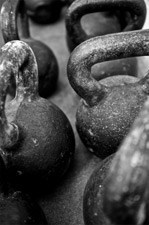 There is a belief system behind the CrossFit brand. This belief system comes down to the principle that a fit and healthy man or woman needs proficiency in 10 skills. These skills are accuracy, coordination, balance, agility, speed, power, flexibility, strength, stamina and endurance. It is a program that was founded by Lauren Glassman and Greg Glassman, a former high-school gymnast.
There is a belief system behind the CrossFit brand. This belief system comes down to the principle that a fit and healthy man or woman needs proficiency in 10 skills. These skills are accuracy, coordination, balance, agility, speed, power, flexibility, strength, stamina and endurance. It is a program that was founded by Lauren Glassman and Greg Glassman, a former high-school gymnast.
The CrossFit brand defines fitness as work capacity that is heightened across the 10 domains of accuracy, coordination, balance, agility, speed, power, flexibility, strength, stamina and endurance. CrossFit asserts that it promotes this by stimulating both hormonal and neurological adaptations over whole metabolic pathways. Athletes who practice CrossFit can climb and jump rope, lift odd objects and row. Using both weightlifting as well as powerlifting techniques, athletes who practice CrossFit can move big loads efficiently over moderate distances. Some equipment and tools that CrossFit athletes use include dumbbells, kettlebells, pull-up bars and gymnastic rings. This program is already utilized by up to 2000 gyms across the globe, and even a few police departments, military organizations and fire departments have used the CrossFit program.
- CrossFit: Forging Elite Fitness
- Journal for CrossFit
- CrossFit for Pregnant Women
- CrossFit for Children
- CrossFit Moves
Nutrition: The Paleo Diet
 The Paleo diet is short for the Paleolithic diet, which is also called the caveman diet, the hunter-gatherer diet and even the Stone Age diet. This nutritional diet is based upon the assumed, ancient diet that consisted of wild plants and even animals that many human species constantly ate during the Paleolithic era. The Paleo diet these days consists mostly of pasture-raised and grass-fed meats, vegetables, fish, nuts, roots, fruits, legumes, grains, salt, dairy products, processed oils and refined sugars. The basic principle of this diet is that it consists of foods that can only be either hunted or gathered, which means that foods such as fish, fruit, insects, eggs, seafood and meat are included in this diet. Practitioners of this diet think that people should get between 56 and 65 percent of their food energy from animal foods and only between 36 and 45 percent of their food energy from plant foods.
The Paleo diet is short for the Paleolithic diet, which is also called the caveman diet, the hunter-gatherer diet and even the Stone Age diet. This nutritional diet is based upon the assumed, ancient diet that consisted of wild plants and even animals that many human species constantly ate during the Paleolithic era. The Paleo diet these days consists mostly of pasture-raised and grass-fed meats, vegetables, fish, nuts, roots, fruits, legumes, grains, salt, dairy products, processed oils and refined sugars. The basic principle of this diet is that it consists of foods that can only be either hunted or gathered, which means that foods such as fish, fruit, insects, eggs, seafood and meat are included in this diet. Practitioners of this diet think that people should get between 56 and 65 percent of their food energy from animal foods and only between 36 and 45 percent of their food energy from plant foods.
- Paleo Diet Website
- Paleo Diet Lifestyle
- Pregnant and the Paleo Diet
- Eating like a Cave Man
- The Paleo Diet for Athletes
CrossFit Exercises
The exercises in CrossFit are based on the principles that each person should have the capability of balancing various levels of activity and also performing satisfactorily at any given task. The exercises for CrossFit are designed to promote and to defend these kinds of principles in the CrossFit philosophy. The exercises in CrossFit can be traditional, such as gym-based exercises like drills, running, calisthenics and lifting, or they might even be anti-traditional like carrying weird-shaped items, pulling along weighted sleds, or even flipping tires. The kinds of exercises that CrossFit features in its program are tailored to each individual so that everyone at different levels of fitness can productively take part in a CrossFit program. For example, participants who lift only 20 pounds versus those who are so advanced that they can lift 130 pounds can identify with each other, based on the principle behind how each person tries to execute the exercise.
CrossFit Competitions
CrossFit competitions are this fitness brand’s way of determining who the fittest person on Earth is, at least based only on the people that are active participants in the CrossFit program. The competitions can best be defined as multi-stage trials that are based on a grueling work ethic and courses. The trick behind these competitions is that the competitors have absolutely no idea what awaits them: Each and every year, CrossFit actually changes the events from the previous year, so competitors have to be reasonably fit enough that they are ready to take on practically anything. In any given CrossFit competition, participants can expect lengthy endurance races, gymnastic ring handstands/pushups, scaling walls, weightlifting, sandbag running and other tests or endurance and strength. CrossFit competitions are open to contestants from across the whole world, and contestants qualify for the event simply by sending in a home video of themselves performing some feat of CrossFit strength. If accepted, they then participate in the CrossFit competition finals, which are usually held around the late part of July.
- 2010 CrossFit Games
- CrossFit Competitions around the World
- CrossFit Competition in Huntsville
- CrossFit Competition Defined
- CrossFit Competition in Houston
Frequently Asked Questions
 Q: What is a WOD?
Q: What is a WOD?
A: WOD stands for “Workout of the Day.”
Q: What is the official warmup for CrossFit?
A: The official warmup for CrossFit consists of three rounds of up to 15 repetitions of the Samson Stretch, the overhead squat with an accompanying broomstick, the back extension, the sit-up, the dip and the pull-up.
Q: What is the meaning of pood?
A: The pood is a Russian measure for kettlebells.
Q: What is a hook grip?
A: The hook grip is when one wraps his or her hand around the bar while grabbing as much of one’s thumb with the first two fingers as possible.
Q: What is a Tabata?
A: A Tabata is doing 20 seconds worth of repetitions for the assigned exercise, then resting for 10 seconds.
Q: What is a Farmer’s Walk?
A: A Farmer’s Walk is lifting two dumbbells that are heavy and walking for a certain distance.
Q: What is a Waiter’s Walk?
A: A Waiter’s Walk is when one holds a weight over his or her head and then walks for a certain distance.
Q: What is a Samson Stretch?
A: A Samson Stretch is when one interlaces his or her fingers and raises them overhead so one’s palms are towards the ceiling. The Stretch occurs when one lifts with his or her shoulders.
Q: What is the wallball target height?
A: The standard height of the wallball target is 10 feet.
Q: What makes a suitable substitute for running?
A: A suitable substitute for running can be box-stepping, stair-climbing, dumbbell or kettlebell swings, heavy bag work, cross-country skiing and box jumps.




 A Scottish engineer, John Logie Baird was the inventor of the first publicly demonstrated and public television in the whole world. He was also the inventor of the first color, electronic television tube. His significant place in the invention of the television is secured by way of his achievements in displaying working television broadcasts. Baird’s television system was in the end displaced by a purely electronic television system, his having been an electromechanical one.
A Scottish engineer, John Logie Baird was the inventor of the first publicly demonstrated and public television in the whole world. He was also the inventor of the first color, electronic television tube. His significant place in the invention of the television is secured by way of his achievements in displaying working television broadcasts. Baird’s television system was in the end displaced by a purely electronic television system, his having been an electromechanical one.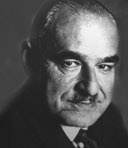 Arthur Korn was a German-born, Jewish inventor, and he both invented and crafted the first circuits for signal conditioning that were for image transmission. Korn’s circuits permitted him to send pictures either by wireless or by telephone between oceans and countries. His circuit worked even without the advantage of electronic amplification. Baird was a direct beneficiary of this technology of Korn’s.
Arthur Korn was a German-born, Jewish inventor, and he both invented and crafted the first circuits for signal conditioning that were for image transmission. Korn’s circuits permitted him to send pictures either by wireless or by telephone between oceans and countries. His circuit worked even without the advantage of electronic amplification. Baird was a direct beneficiary of this technology of Korn’s.  On October 2, 1925, Baird made a breakthrough by succeeding at transmitting the very first grayscale, television image. After this success, Baird looked for publicity by paying a visit to the offices of the Daily Express newspaper, yet the editor at the time thought him to be mad and warned his staff to be wary of him. A few months later in January of 1926, Baird demonstrated his transmission success to both a reporter from the Times newspaper as well as members of the Royal Institution. More demonstrations followed thereafter: In July of 1928, he demonstrated the very first color transmission in the world, and in 1932, he demonstrated the first ultra-short wave transmissions in Britain.
On October 2, 1925, Baird made a breakthrough by succeeding at transmitting the very first grayscale, television image. After this success, Baird looked for publicity by paying a visit to the offices of the Daily Express newspaper, yet the editor at the time thought him to be mad and warned his staff to be wary of him. A few months later in January of 1926, Baird demonstrated his transmission success to both a reporter from the Times newspaper as well as members of the Royal Institution. More demonstrations followed thereafter: In July of 1928, he demonstrated the very first color transmission in the world, and in 1932, he demonstrated the first ultra-short wave transmissions in Britain.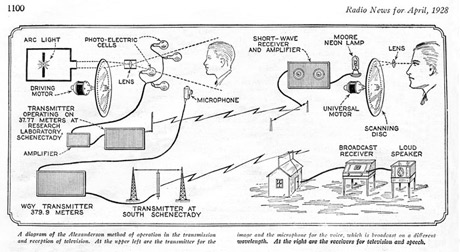
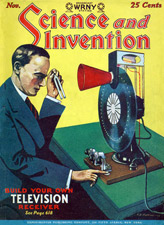 In 1927, the Scotsman had already transmitted a long-distance television signal between Glasgow and London. This was the precursor to him establishing his own company, the Baird Television Development Company Ltd., which holds the distinction of producing the first transmission across the Atlantic from London to New York in 1928. It also made the first television program for the BBC. Baird’s television systems were used by the BBC until 1937, when they decided to switch to an electronic television system that was created by EMI-Marconi. Even though mechanical television systems had been relegated due to the more popular electronic systems, Baird still contributed to the newer medium. He both demonstrated and patented a system of 3-D television that had a definition of 500 lines in 1941, and he also performed the world’s first demonstration of a television display that was completely electronic in 1944.
In 1927, the Scotsman had already transmitted a long-distance television signal between Glasgow and London. This was the precursor to him establishing his own company, the Baird Television Development Company Ltd., which holds the distinction of producing the first transmission across the Atlantic from London to New York in 1928. It also made the first television program for the BBC. Baird’s television systems were used by the BBC until 1937, when they decided to switch to an electronic television system that was created by EMI-Marconi. Even though mechanical television systems had been relegated due to the more popular electronic systems, Baird still contributed to the newer medium. He both demonstrated and patented a system of 3-D television that had a definition of 500 lines in 1941, and he also performed the world’s first demonstration of a television display that was completely electronic in 1944.

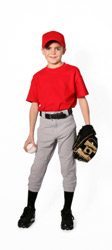
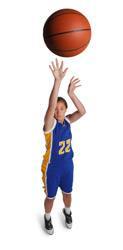 Crew
Crew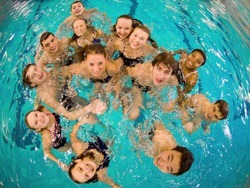 Soccer
Soccer
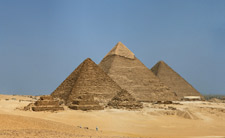 The Pyramids of Giza, Egypt was built approximately 2,000 B.C. These are the massive tombs of the Egyptian pharaohs. A tomb is like a large stone room where the Egyptians buried people when they died. The Egyptians believed that the dead person would come alive again to live a new life, which is why their tombs were also filled with the person’s belongings. Of the ancient wonders, the Pyramids of Giza is the only one left standing.
The Pyramids of Giza, Egypt was built approximately 2,000 B.C. These are the massive tombs of the Egyptian pharaohs. A tomb is like a large stone room where the Egyptians buried people when they died. The Egyptians believed that the dead person would come alive again to live a new life, which is why their tombs were also filled with the person’s belongings. Of the ancient wonders, the Pyramids of Giza is the only one left standing.
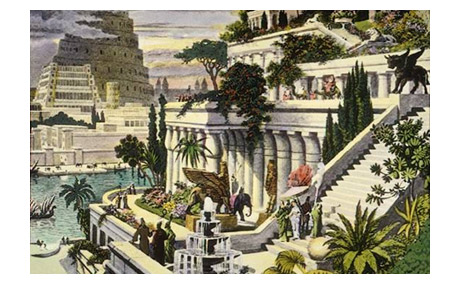

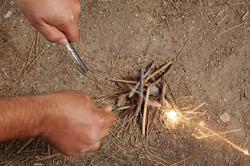 People who are caught out in the wilderness, completely unprepared, can still create a survival advantage for themselves by building a fire in other ways. Try to collect as much natural kindling as possible, in the form of dry leaves, pine needles, abandoned birds’ nests, and grass. Areas directly under large trees are usually most likely to be drier than the surrounded area during cold or wet weather. If there are pine trees nearby, look for trails of sap running down the tree and scrape it off to use as a fire starter. In other emergency instances, a car battery or car cigarette lighter can also be used to start a fire.
People who are caught out in the wilderness, completely unprepared, can still create a survival advantage for themselves by building a fire in other ways. Try to collect as much natural kindling as possible, in the form of dry leaves, pine needles, abandoned birds’ nests, and grass. Areas directly under large trees are usually most likely to be drier than the surrounded area during cold or wet weather. If there are pine trees nearby, look for trails of sap running down the tree and scrape it off to use as a fire starter. In other emergency instances, a car battery or car cigarette lighter can also be used to start a fire.


 Feng shui can best be thought of as an ancient Chinese practice that some think employs the laws of Heaven as well as Earth to assist in improving the life of the average person. This improvement comes by way of getting some positive qi. The phrase feng shui can be taken as the literal meaning of wind-water. The origins of feng shui can be traced all the way back to Hongshan and Yangshao cultures. Hongshan culture was a Neolithic culture in the northeast of China, which lasted from 4700 BC all the way to 2900 BC, while the Yangshao culture was another Neolithic culture in China that lasted from 5000 BC to 3000 BC. Today, traditional feng shui is still practiced by Chinese people and also New Age entrepreneurs, who have brought it to the West with, however, some losses in translation.
Feng shui can best be thought of as an ancient Chinese practice that some think employs the laws of Heaven as well as Earth to assist in improving the life of the average person. This improvement comes by way of getting some positive qi. The phrase feng shui can be taken as the literal meaning of wind-water. The origins of feng shui can be traced all the way back to Hongshan and Yangshao cultures. Hongshan culture was a Neolithic culture in the northeast of China, which lasted from 4700 BC all the way to 2900 BC, while the Yangshao culture was another Neolithic culture in China that lasted from 5000 BC to 3000 BC. Today, traditional feng shui is still practiced by Chinese people and also New Age entrepreneurs, who have brought it to the West with, however, some losses in translation. With respect to architecture, feng shui plays a very significant role, especially in deciding the form of the space in consideration. The concept of feng shui basically is concerned with keeping harmony and peace in the flow of the architecture of any structure. This structure can be something as imposing as an office building, yet it can also be as simple as the interior space of one’s living room or any other room in a residence. The architecture behind feng shui is such that any space should be designed so that there is a regular flow of positive energy or qi. Precision is necessary in feng shui design, and this can be seen no better than the incorporation of a compass or even a Luo Pan to decide which the favorable positioning of certain rooms in a house or building.
With respect to architecture, feng shui plays a very significant role, especially in deciding the form of the space in consideration. The concept of feng shui basically is concerned with keeping harmony and peace in the flow of the architecture of any structure. This structure can be something as imposing as an office building, yet it can also be as simple as the interior space of one’s living room or any other room in a residence. The architecture behind feng shui is such that any space should be designed so that there is a regular flow of positive energy or qi. Precision is necessary in feng shui design, and this can be seen no better than the incorporation of a compass or even a Luo Pan to decide which the favorable positioning of certain rooms in a house or building. With regards to tombs, feng shui was used to orient them because of their important, spiritual significance. By about 3000 BC, feng shui was being used in many Chinese cities like Puyang and Mawangdui because of the presence of tombs in those locations. Liuren astrolabes were some of the oldest tools used for feng shui, and some have even been excavated from Chinese tombs that date to 250 BC. Even in pre-modern China, it was discovered that feng shui used on tombs had as much importance as feng shui used in private homes.
With regards to tombs, feng shui was used to orient them because of their important, spiritual significance. By about 3000 BC, feng shui was being used in many Chinese cities like Puyang and Mawangdui because of the presence of tombs in those locations. Liuren astrolabes were some of the oldest tools used for feng shui, and some have even been excavated from Chinese tombs that date to 250 BC. Even in pre-modern China, it was discovered that feng shui used on tombs had as much importance as feng shui used in private homes. Both the layout of one’s home as well as the layout of the furniture are said to be filled with life energy, just as natural wonders in nature; so believe the Chinese. In feng shui, the belief is that certain objects and furniture in the home can actually have a negative burden on one’s spirit, especially if they are arranged in a wrong way where the energy flow of the home is impeded. Feng shui is important, thus, in helping to improve the spiritual quality of one’s home by laying out the furniture in such a way that the energy flow is no longer impeded. Feng shui will try to use all elements in a room, such as furniture or even mirrors, plants, the color of the walls, etc.; to bring balance back to the all-important way that the energy inside the whole home flows around. Achieving this all-crucial energy balance in the home is the goal of a feng shui decorator and practitioner, and it is thought to improve the spiritual life and the mood of the person living inside such a space. Organizations like the International Feng Shui Guild promote awareness of feng shui and are consultants for aims like bringing feng shui into the home.
Both the layout of one’s home as well as the layout of the furniture are said to be filled with life energy, just as natural wonders in nature; so believe the Chinese. In feng shui, the belief is that certain objects and furniture in the home can actually have a negative burden on one’s spirit, especially if they are arranged in a wrong way where the energy flow of the home is impeded. Feng shui is important, thus, in helping to improve the spiritual quality of one’s home by laying out the furniture in such a way that the energy flow is no longer impeded. Feng shui will try to use all elements in a room, such as furniture or even mirrors, plants, the color of the walls, etc.; to bring balance back to the all-important way that the energy inside the whole home flows around. Achieving this all-crucial energy balance in the home is the goal of a feng shui decorator and practitioner, and it is thought to improve the spiritual life and the mood of the person living inside such a space. Organizations like the International Feng Shui Guild promote awareness of feng shui and are consultants for aims like bringing feng shui into the home.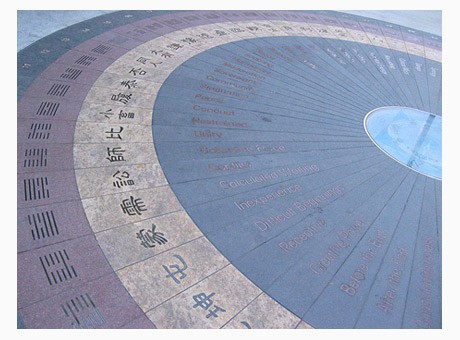
 The basic equipment needed to start bird watching is quite minimal. A standard set normally includes a notepad, a published bird field guide, and a reliable pair of binoculars. The field guide is especially useful in helping to identify different species of birds, while the notepad is used to detail new sightings. Many bird watchers also like to photograph birds as part of their note-taking process. Photographing the birds helps with species identification, especially if the bird flies off after only a brief time. Since bird watching takes place outdoors, bird watchers need to be well prepared so that they can stay outside comfortably for extended periods of time. To do this, come prepared with appropriate clothing (including a hat, sunglasses and walking shoes), sunscreen, and mosquito repellent. Other items such as a cell phone, a map, a first aid kit, a compass, snacks and water are particularly useful for day journeys or trips into unknown areas.
The basic equipment needed to start bird watching is quite minimal. A standard set normally includes a notepad, a published bird field guide, and a reliable pair of binoculars. The field guide is especially useful in helping to identify different species of birds, while the notepad is used to detail new sightings. Many bird watchers also like to photograph birds as part of their note-taking process. Photographing the birds helps with species identification, especially if the bird flies off after only a brief time. Since bird watching takes place outdoors, bird watchers need to be well prepared so that they can stay outside comfortably for extended periods of time. To do this, come prepared with appropriate clothing (including a hat, sunglasses and walking shoes), sunscreen, and mosquito repellent. Other items such as a cell phone, a map, a first aid kit, a compass, snacks and water are particularly useful for day journeys or trips into unknown areas. The biggest questions that most new bird watchers have are where and when to start observing birds. It helps to have a guide or checklist that indicates which birds are prevalent in certain areas during each season. Although a backyard, public garden, or local bird sanctuary are good places to start, rarer birds can usually be found in forests and woods. When setting up in an area, be very quiet and be prepared to stay there for some time. Often patience is rewarded when a bird watcher stays in one place for a long time. This allows the birds to get used to the person being there and they eventually get over their skittishness. Always respect the birds, their habitats, and other creatures that make their homes there. Do not leave any trash behind or destroy plants, trees, or nests.
The biggest questions that most new bird watchers have are where and when to start observing birds. It helps to have a guide or checklist that indicates which birds are prevalent in certain areas during each season. Although a backyard, public garden, or local bird sanctuary are good places to start, rarer birds can usually be found in forests and woods. When setting up in an area, be very quiet and be prepared to stay there for some time. Often patience is rewarded when a bird watcher stays in one place for a long time. This allows the birds to get used to the person being there and they eventually get over their skittishness. Always respect the birds, their habitats, and other creatures that make their homes there. Do not leave any trash behind or destroy plants, trees, or nests.

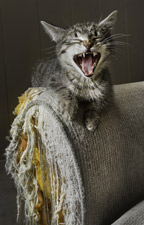

 U.S. movie companies, the number one distributor, and the largest raw film supplier, Eastman Kodak. The legacy of the Edison Trust was to eliminate the dominance of foreign films on U.S. screens, standardize the way movies were both distributed and then exhibited in the U.S., and encouraged internal competition among U.S. films. Yet the Edison Trust also hurt its members since it deterred them from getting into feature film production and receiving outside financing for movies. Filmmakers who, despite all this control and monopoly by the Edison Trust, rejected this dominance by the Edison Trust were the first makers of independent films.
U.S. movie companies, the number one distributor, and the largest raw film supplier, Eastman Kodak. The legacy of the Edison Trust was to eliminate the dominance of foreign films on U.S. screens, standardize the way movies were both distributed and then exhibited in the U.S., and encouraged internal competition among U.S. films. Yet the Edison Trust also hurt its members since it deterred them from getting into feature film production and receiving outside financing for movies. Filmmakers who, despite all this control and monopoly by the Edison Trust, rejected this dominance by the Edison Trust were the first makers of independent films.